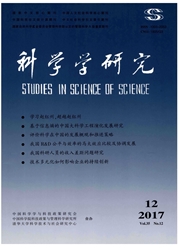

 中文摘要:
中文摘要:
本研究聚焦于“后发企业研发国际化的战略动机是如何影响其海外研发机构进入模式的”这一核心问题,文章首先从技术特征和市场焦点两个维度解构了研发国际化的战略动机,识别了三种中国企业海外研发中心的功能定位:海外市场适应点、技术先驱点以及技术卓越中心。第二,本文从合法性双元视角出发,提出了相对合法性需求的概念,研究了不同研发国际化动机下,企业面临的内外合法性需求之争,以及形成主导的合法性需求;后发企业会根据内外合法性需求的相对水平对海外研发机构的进入模式和治理结构进行安排,以平衡和响应这两股抵触的力量。本研究提出了战略动机→内外合法性需求优先权→进入模式选择的整合分析框架,为企业研发国际化过程中海外子公司进入模式选择提供了理论解释。
 英文摘要:
英文摘要:
This paper focuses on how the strategic motivation of global R&D of firms from emerging economies influences the design of the foreign affiliates' entry modes. By perspective of legitimacy ambidexterity, it constructs the relative need of legitimacy. Firstly, we use the dimensions of technology characteristics and market focus to depict a fine - grained category of the strategic motivation of Chinese firms' global R&D, namely technology pioneer, foreign market adaptor and technology excellence center. Secondly, we find that firms will face two competing forces of internal and external legitimacy appeals so as to respond to the dynamic tradeoff of the foreign affiliates. Thirdly, we claim that firms will design their entry modes of the foreign unit to balance the internal and external legitimacy. Finally, we come to a integrative framework to theoretically interpret the phenomenon of various governance mode of firms' globalization.
 同期刊论文项目
同期刊论文项目
 同项目期刊论文
同项目期刊论文
 期刊信息
期刊信息
